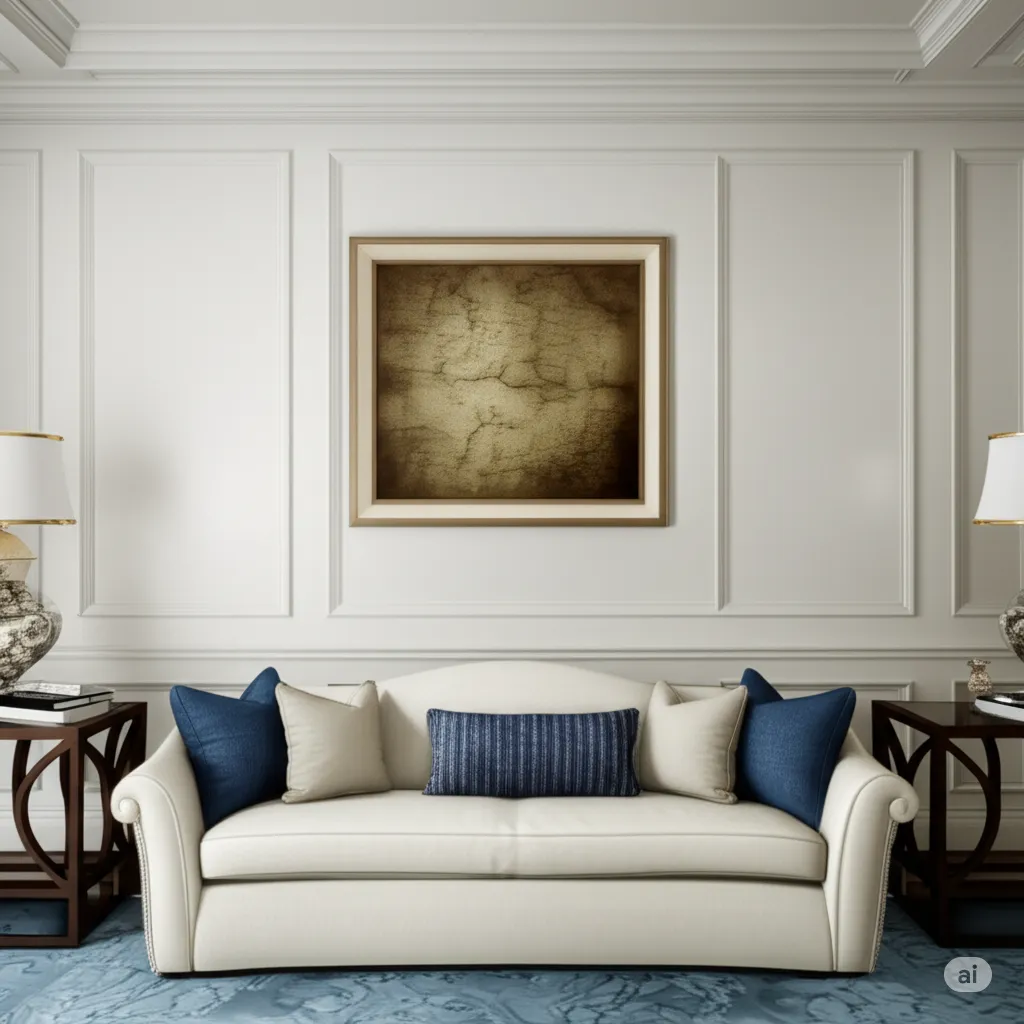Often overlooked as a purely functional element, lighting is, in fact, one of the most potent tools in an interior designer’s arsenal for shaping the mood and atmosphere of a home. It has the power to highlight the beauty of your carefully chosen art, create cozy and inviting nooks, and even influence your emotions and overall well-being. Strategic lighting isn’t just about seeing; it’s about feeling, and understanding how to layer and direct light can transform your living spaces into emotionally resonant environments.
Think about the difference between a dimly lit room with a soft glow and a brightly illuminated space. Each evokes a distinct feeling and serves a different purpose. By consciously considering the types of lighting and how they interact within your home, you can create a dynamic and emotionally supportive ambiance that enhances your art and elevates your everyday life.
The Layers of Light: Understanding Different Types
Effective lighting design involves layering different types of light to create depth, functionality, and visual interest:
- Ambient Lighting (General Light): This provides overall illumination to a room, making it safe and comfortable to navigate. It often comes from ceiling fixtures, chandeliers, or recessed lighting. While essential, ambient light alone can feel flat and uninspired.
- Task Lighting: Focused and bright, task lighting is designed to help you perform specific activities, such as reading, cooking, or working. Desk lamps, under-cabinet lighting, and floor lamps directed at reading chairs fall into this category.
- Accent Lighting (Highlight Lighting): This is where the magic happens for showcasing your art and architectural features. Accent lights are used to create visual interest, add drama, and draw attention to specific objects. Picture lights, spotlights, and wall sconces directed at artwork are prime examples.
- Decorative Lighting: Fixtures that serve as both a light source and a decorative element in themselves, such as statement pendant lights, unique table lamps, or string lights.
By thoughtfully combining these layers, you can create a lighting scheme that is both functional and emotionally evocative.
Highlighting Your Art: Bringing Pieces to Life
Accent lighting is crucial for showcasing your art collection and allowing its beauty to truly shine:
- Picture Lights: Mounted above a piece of framed art, these fixtures cast a focused beam that evenly illuminates the artwork. Choose fixtures with adjustable arms and light direction to customize the effect.
- Track Lighting: Versatile and adjustable, track lighting allows you to position multiple spotlights along a track, making it ideal for illuminating a gallery wall or highlighting different areas of a room.
- Spotlights (Recessed or Surface-Mounted): These can be strategically placed in ceilings or on walls to direct beams of light onto sculptures, tapestries, or larger paintings. Consider using dimmer switches to control the intensity.
- Wall Sconces: When placed near artwork, sconces can provide a softer, more diffused accent light, adding a touch of elegance and warmth.
- Consider the Art’s Medium: Paintings might benefit from a soft, even wash of light, while sculptures might look dramatic with more focused beams that create interesting shadows.
The goal is to illuminate your art without creating harsh glares or uneven lighting that distorts the colors and details of the pieces.
Sculpting Mood with Light: Emotional Ambiance
Beyond highlighting art, the overall lighting scheme of a room plays a significant role in shaping its emotional ambiance:
- Warm vs. Cool Light: The color temperature of your light bulbs can dramatically impact the feeling of a space. Warmer light (lower Kelvin temperatures) creates a cozy and inviting atmosphere, while cooler light (higher Kelvin temperatures) can feel brighter and more energizing. Consider using warmer tones in living rooms and bedrooms and cooler tones in kitchens and home offices.
- Dimmer Switches: These are your best friends for controlling the intensity of light and creating different moods. Dimming the lights in the evening can create a relaxing and intimate atmosphere.
- Layering Intensity: Combine bright task lighting for functionality with softer ambient and accent lighting for ambiance. This allows you to adjust the light levels to suit different activities and times of day.
- The Play of Light and Shadow: Don’t underestimate the power of shadows in creating depth, intrigue, and a sense of drama. Strategic placement of light sources can create interesting patterns and visual texture.
- Natural Light: Maximize the use of natural light during the day. Sheer curtains can diffuse harsh sunlight while still allowing brightness to fill the room. Consider how natural light interacts with your art at different times of day.
Choosing the Right Fixtures and Bulbs: Practical Considerations
The type of light fixtures and bulbs you choose will impact both the aesthetics and the quality of light in your home:
- Consider the Style of Your Home: Choose fixtures that complement your overall decor style. A modern pendant light might look out of place in a traditionally decorated room.
- Energy Efficiency: Opt for LED bulbs, which are energy-efficient, long-lasting, and available in a wide range of color temperatures and brightness levels.
- Bulb Placement: Pay attention to the direction and spread of light emitted by different types of bulbs. Spotlights create focused beams, while floodlights offer wider coverage.
- Decorative Fixtures as Art: Choose decorative lighting fixtures that are beautiful in their own right and contribute to the overall aesthetic of the room, even when they are not illuminated.
Final Thoughts: Painting with Light
Strategic lighting is akin to painting with light, allowing you to highlight what you want to emphasize, create depth and dimension, and ultimately shape the emotional experience of your home. By understanding the different layers of light and how they interact with your art and decor, you can transform your living spaces into environments that are not only visually appealing but also deeply resonant with how you want to feel. So, take a closer look at your lighting scheme and consider how you can use it to illuminate emotions and enhance the artful sanctuary of your home.
